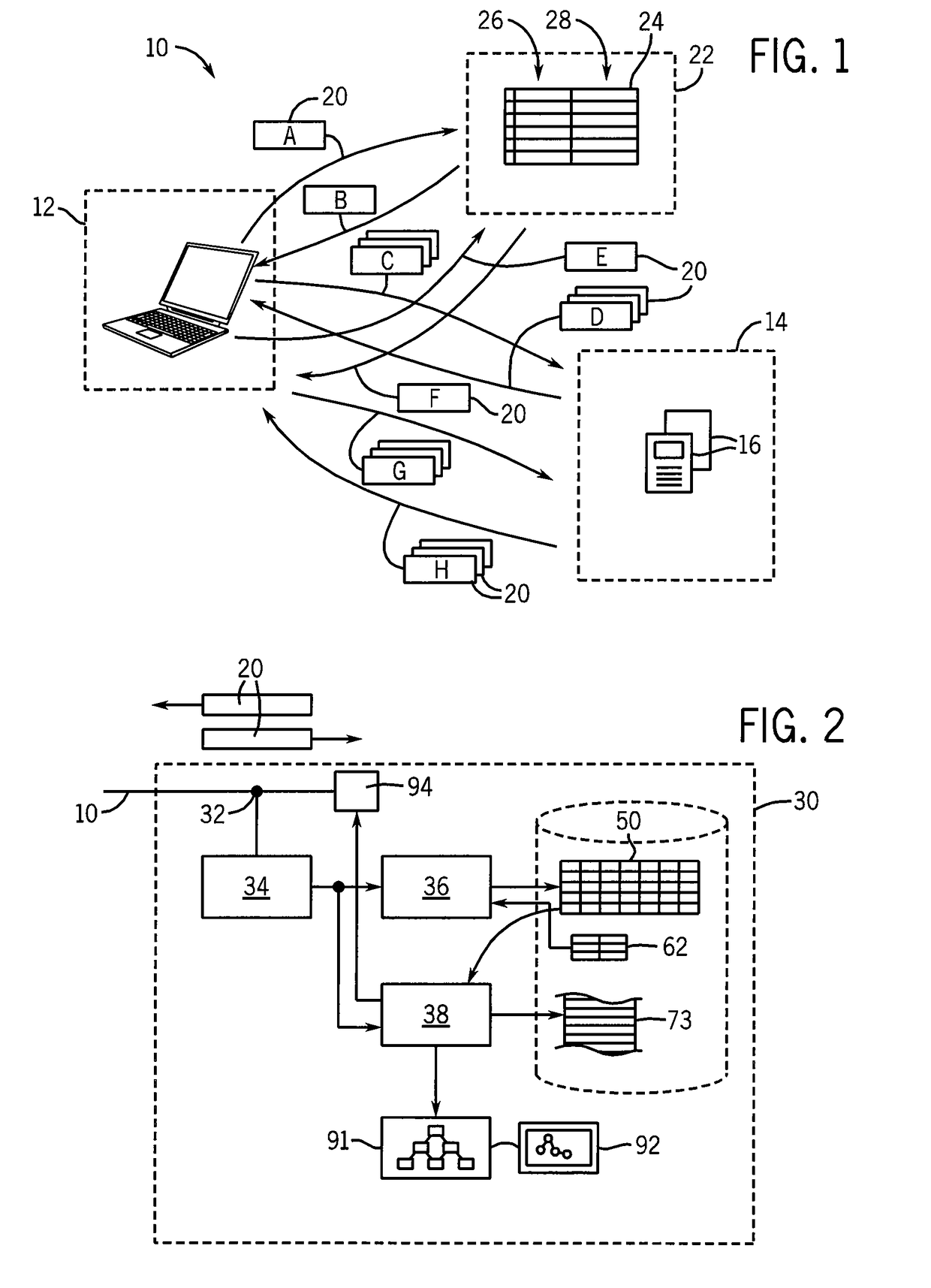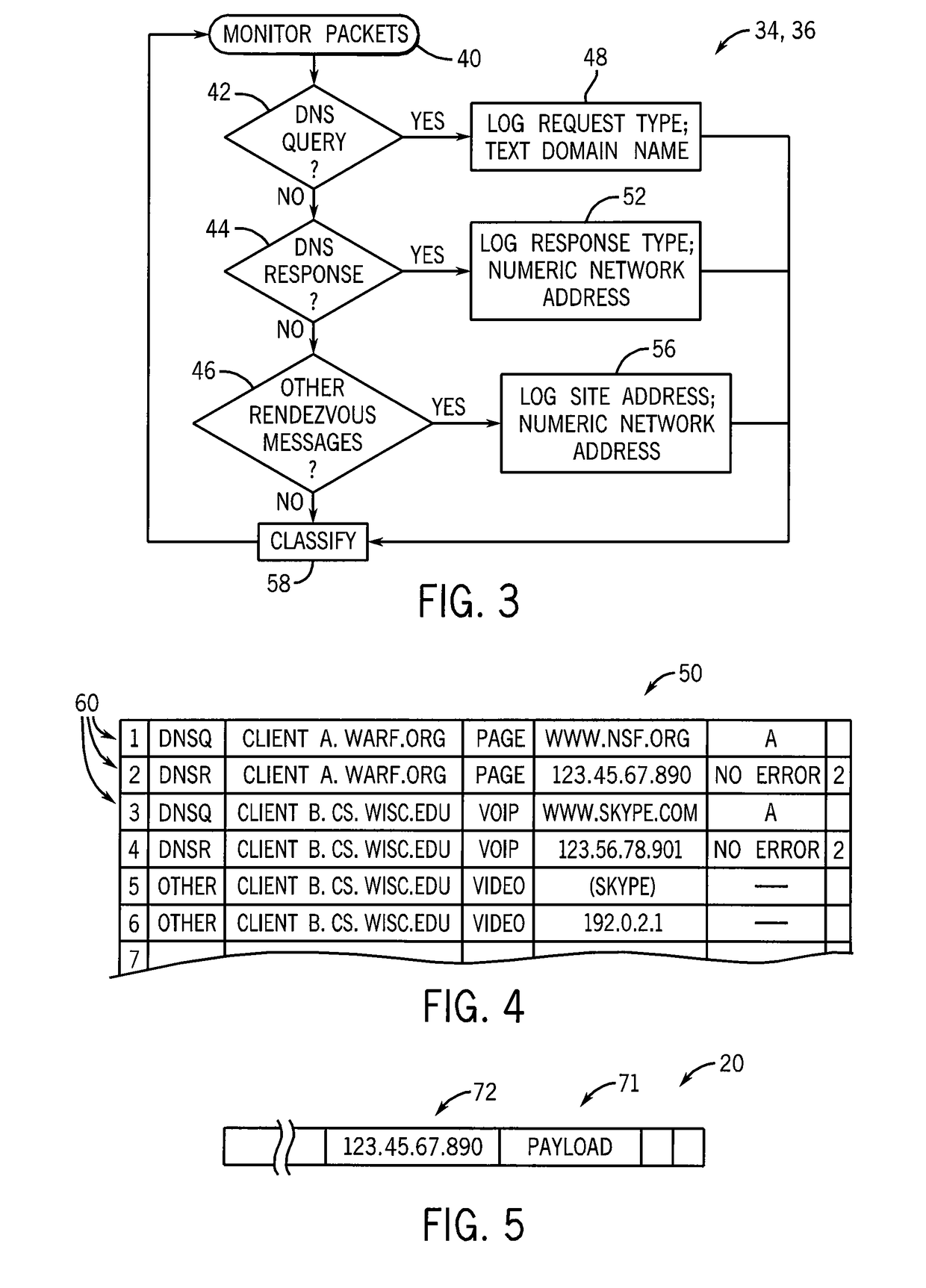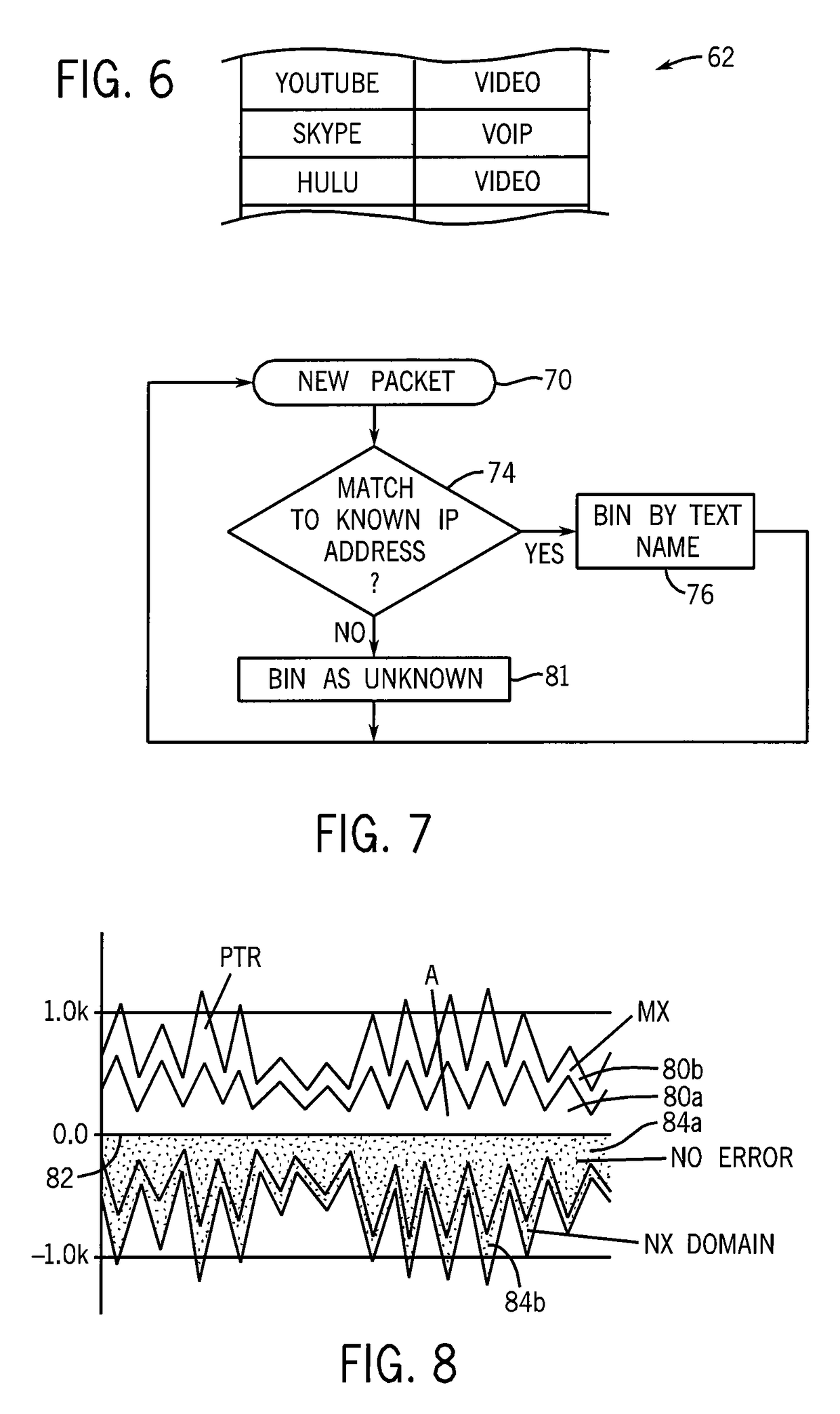Apparatus and method for classifying network packet data
a network packet and data classification technology, applied in the field of system monitoring of network traffic, can solve the problems of statistical fingerprints failing to distinguish many important packet classifications, trying to discern message categories from payload data even harder, etc., and achieve the effect of more accurate packet classification
- Summary
- Abstract
- Description
- Claims
- Application Information
AI Technical Summary
Benefits of technology
Problems solved by technology
Method used
Image
Examples
Embodiment Construction
[0042]Referring now to FIG. 1, a packet-based computer network 10, such as the Internet, may provide for communication between client devices 12 and a server 14. The client device 12 may, for example, be a standard personal computer running a web browser program, and the server 14 a special-purpose server computer executing a Web server program. The server 14 may serve one or more webpages 16 or other types of data via multiple data packets 20 exchanged over the computer network 10.
[0043]Referring momentarily to FIG. 5, data packets 20 provide a payload section 71 holding the data of the webpages 16, for example, attached to a numeric destination address 72. The numeric destination address 72 allows the packet 20 to be correctly forwarded through various network routers and the like (not shown) between the client device 12 and the server 14. Data packets 20 passing from the client device 12 to the server 14 will have a destination address of the server 14 while data packets 20 passi...
PUM
 Login to View More
Login to View More Abstract
Description
Claims
Application Information
 Login to View More
Login to View More - R&D
- Intellectual Property
- Life Sciences
- Materials
- Tech Scout
- Unparalleled Data Quality
- Higher Quality Content
- 60% Fewer Hallucinations
Browse by: Latest US Patents, China's latest patents, Technical Efficacy Thesaurus, Application Domain, Technology Topic, Popular Technical Reports.
© 2025 PatSnap. All rights reserved.Legal|Privacy policy|Modern Slavery Act Transparency Statement|Sitemap|About US| Contact US: help@patsnap.com



